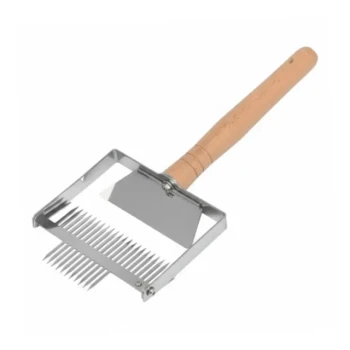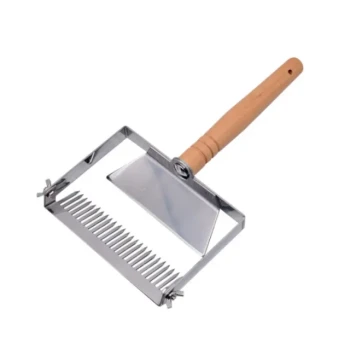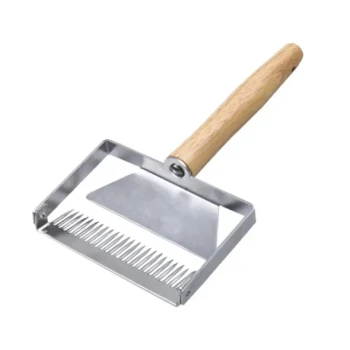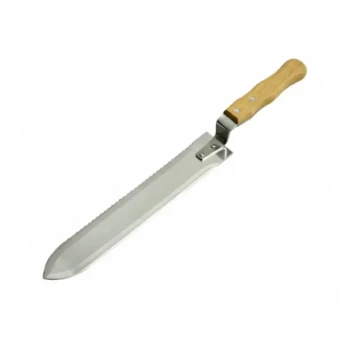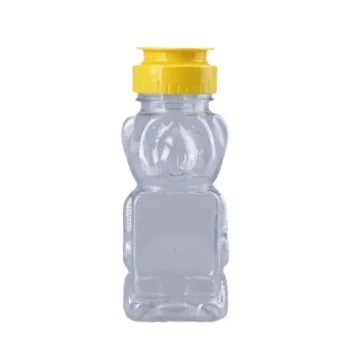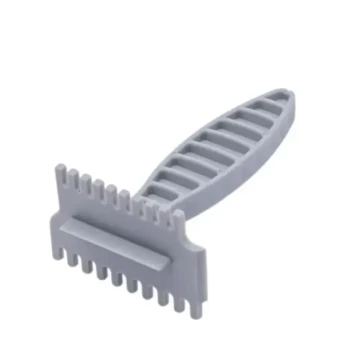The most direct reason your bees are not capping honey is that it is not yet ready. Bees will only seal a cell of honey with a wax cap once they have reduced its water content to around 17-18%. This dehydration process is critical, as capping honey with too much moisture will cause it to ferment and spoil within the comb.
The core issue isn't a refusal to work, but a necessary delay. Uncapped honey is a clear signal from your colony that the nectar has not yet been cured to the specific moisture level required for long-term, stable storage.
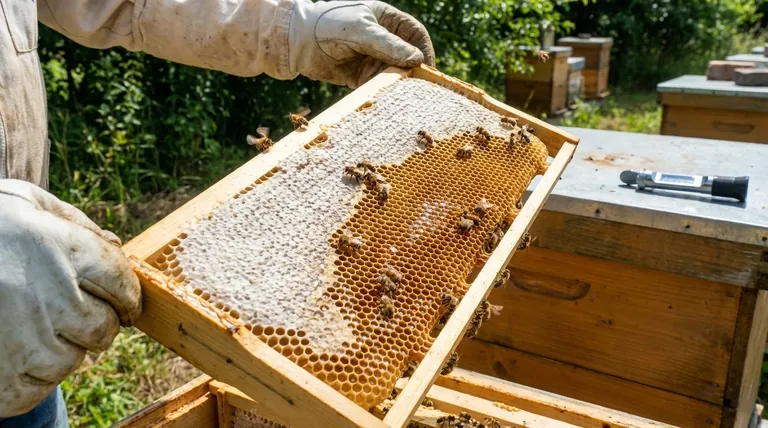
The Science of Capping: Why Moisture is Everything
To understand why your bees are waiting, you must first understand the transformation from nectar to honey. This is a deliberate and resource-intensive process.
From Watery Nectar to Thick Honey
Nectar collected from flowers is not honey. It's a sweet liquid that is often up to 80% water. Bees must actively work to ripen this nectar, adding enzymes and fanning their wings to create airflow, which evaporates the excess moisture.
The "Magic Number" for Preservation
The goal of this dehydration is to get the water content below 18.6%. Below this threshold, naturally occurring yeasts cannot multiply. This prevents the honey from fermenting, making it shelf-stable for months or even years.
Capping as the Final Seal
The wax cap is the final step. It's the bees' way of certifying that the honey in a cell is fully cured, protected, and ready for long-term storage as their winter food supply. They will not waste precious wax and energy to cap a cell that will spoil.
Diagnosing the Root Cause of the Delay
While high moisture is the direct cause, several underlying factors can contribute to the delay in capping.
A Strong, Ongoing Nectar Flow
If a strong nectar flow is still in progress, the bees are busy collecting and beginning the dehydration process. They will often fill cells with nectar but won't cap them until the flow slows and they can catch up on their work. This is often a sign of a productive hive, not a problem.
High Environmental Humidity
Bees have a much harder time evaporating moisture from nectar when the surrounding air is already saturated with humidity. Extended periods of rainy or humid weather can significantly slow down the curing process. Poor hive ventilation can trap this moist air, making the problem even worse.
An Insufficient Bee Population
The process of fanning nectar and producing wax requires a large workforce. A smaller or weaker colony may not have enough bees to effectively cure the amount of nectar being brought in. They may be overwhelmed and simply unable to keep up with the task.
Understanding the Trade-offs and Risks
Patience is a virtue in beekeeping, but it's also important to know when a delay signals a deeper issue.
The Danger of Premature Harvesting
Never harvest frames of largely uncapped honey without verifying the moisture content. If you extract "honey" with a water content above 20%, it will likely begin to ferment in the jar. You will notice a sour smell and bubbling as the yeast converts sugars into alcohol and CO2.
The "Shake Test" as a Field Guide
A simple and effective field test is the "shake test." Hold a frame horizontally over the open hive and give it a firm downward shake. If a shower of liquid flies out of the cells, the nectar is far too wet and nowhere near ready. If nothing or very little comes out, the honey is much closer to being cured.
When It Signals a Deeper Problem
If weeks pass after the nectar flow has stopped and the honey remains uncapped, it may be a symptom of a struggling colony. Check your brood frames for a healthy queen and a solid laying pattern. A weak population may not have the resources to finish the job.
Making the Right Choice for Your Hive
Your decision on how to proceed should be based on the health of the colony and your goals for the harvest.
- If your primary focus is colony health and a quality harvest: Be patient. Give the bees the time they need to do their work properly. Ensure the hive has good upper ventilation to help them manage moisture, especially during humid weather.
- If your primary focus is determining if the honey is ready: Use a honey refractometer. This simple tool gives you a precise measurement of the water content, removing all guesswork. Honey is safe to harvest when it reads below 18.6%.
- If you suspect the colony is weak: Intervene to support the bees. You may need to combine it with a stronger colony or address an underlying issue like a failing queen. The uncapped honey is merely a symptom of a bigger problem.
Ultimately, the bees' behavior is your most reliable indicator; their refusal to cap the honey is a clear message that the work is not yet complete.
Summary Table:
| Potential Cause | What It Means | Key Indicator |
|---|---|---|
| Honey Not Ready | Moisture content is above 18%. | Bees are actively fanning and dehydrating nectar. |
| Strong Nectar Flow | Bees are overwhelmed with incoming nectar. | Many uncapped cells during an active flow. |
| High Humidity | Bees struggle to evaporate water from nectar. | Rainy, humid weather; poor hive ventilation. |
| Weak Colony | Insufficient bee population to do the work. | Small population, poor brood pattern. |
Ensure a successful, high-quality honey harvest with the right equipment.
A healthy, productive hive is the foundation of good beekeeping. At HONESTBEE, we supply commercial apiaries and beekeeping equipment distributors with the durable, wholesale-focused supplies needed to support strong colonies and efficient honey production.
From essential hive components to extraction tools, our equipment helps beekeepers create the optimal conditions for their bees to thrive and produce perfectly cured honey.
Contact our team today to discuss your wholesale needs and how our reliable beekeeping supplies can support your operation's success.
Visual Guide
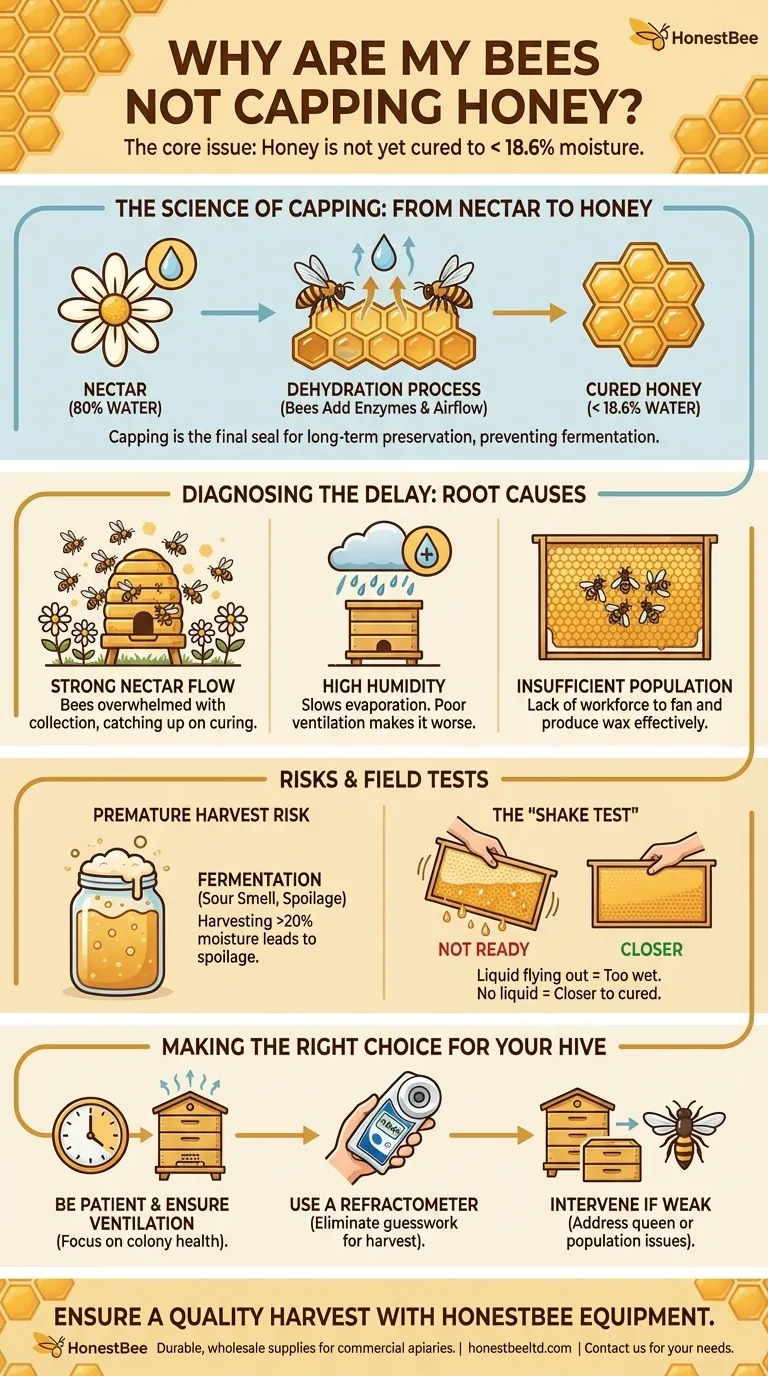
Related Products
- Stainless Steel Double Sided Honey Uncapping Fork with Scraper
- Wide Adjustable Stainless Steel Honey Uncapping Fork with Scraper
- Extra Wide Stainless Steel Honey Uncapping Fork with Scraper Beekeeping Tool
- Professional Wide Blade Honey Scraper for Beekeeping and Honey Processing
- Honeycomb Uncapping Knife for Apiculture
People Also Ask
- What makes polyurethane foam environmentally friendly? The Surprising Benefits of a Durable, Inert Material
- How does an uncapping fork work, and what are its benefits? Achieve Precision Unsealing for Your Honey Frames
- What should be done with honey combs that are not fully capped? Trust the Bees for a Perfect Harvest
- How should honeycombs be prepared for honey extraction? A Step-by-Step Guide to a Clean Harvest
- What is an uncapping knife? Choose the Right Tool for Your Beekeeping Scale
